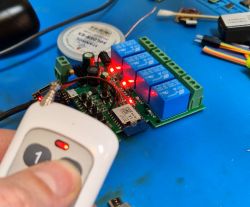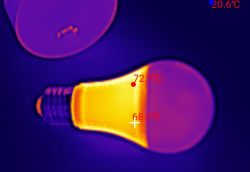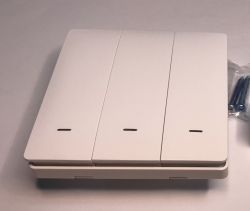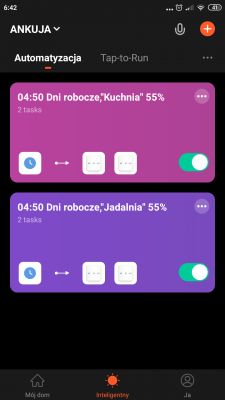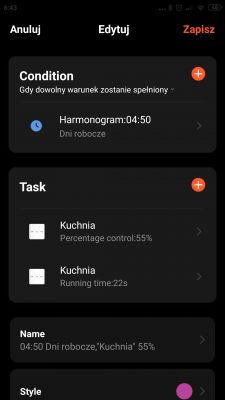FAQ
TL;DR: Pressed bistable inputs can lock Tuya shutter control—"impossible to control from the phone"—and a safety cutoff stops power after about 1 minute. [Elektroda, gruniu, post #18378393]
Why it matters: This FAQ helps DIYers wire compatible switches, fix lockouts, and set reliable percentage schedules for Tuya-based roller shutters.
Quick Facts
- Use monostable (momentary) wall switches; latching/bistable types interfere with app control. [Elektroda, aleSMARTdom, post #19043453]
- Tuya “percent open” uses time-based calibration; long shutters can drift ~2 s and stop near 95%. [Elektroda, stalman1, post #20043215]
- A latched wall input blocks app commands; motor power auto-cuts after ~1 minute for safety. [Elektroda, gruniu, post #18378393]
- Tuya scenes support absolute percentage and relative open/close steps in Automation. [Elektroda, stalman1, post #20383234]
- Practical gap routine: Close 30 s, then Open 5 s, then Stop, to leave a small slit. [Elektroda, gruniu, post #19374340]
Can I use a bistable (latching) wall switch with a Tuya shutter module?
No. Use a monostable (momentary) switch. Latching inputs keep the module busy and block app control. As one installer put it, “it only works with monostable switches.” Replace bistable rockers with spring‑return up/down switches designed for shutters. This ensures the input is a short pulse, not a permanent command. After swapping to monostable, the wall switch and app can coexist cleanly without lockouts. [Elektroda, aleSMARTdom, post #19043453]
Why does phone control stop after I press the wall switch?
Your bistable switch holds S1/S2 active, so the module treats it as a continuous command. The motor times out and power cuts after about 1 minute, but the latched input still blocks app control until you release the switch. Replace the switch with monostable or stop using latched presses. This behavior matches field tests with a bulb on the outputs. [Elektroda, gruniu, post #18378393]
How do I test S1/S2 inputs without the switch?
Use a brief neutral short to simulate a button press. 1) Measure voltage between S1 and N (and S2 and N) during idle and actuation. 2) Momentarily short S1 to N to simulate “Up,” then test S2 to N for “Down.” 3) Remove the short immediately; do not hold it. This verifies whether the module expects an N-referenced pulse on S1/S2 and whether app control resumes when inputs are idle. [Elektroda, kosmos99, post #18377649]
Should I bridge phase to the L terminal next to L1 on my module?
Follow the module’s wiring diagram only. Some Tuya shutter modules internally provide live on that L pad; adding a jumper is unnecessary and unsafe. One user confirmed that terminal is live after power‑up and the manual shows no external link there. If your manual does not call for a bridge, do not add it. [Elektroda, gruniu, post #18377620]
Does Tuya support percentage control and scheduling?
Yes. In Smart > Automation scenes, you can set absolute position or adjust by a percentage. The scene task offers three options: set to X%, open by +X%, or close by −X%. Use schedules or triggers to run these tasks at specific times. This lets you predefine comfort or privacy positions without manual slider use. [Elektroda, stalman1, post #20383234]
How do I set a morning open to exactly 55%?
Create an Automation scene. 1) Smart > Automation > “+” > Schedule for the desired time. 2) Task > select your shutter > Percentage control > set 55%. 3) Save and enable the scene. A user confirmed automatic 55% opening with this approach, sharing screenshots from the Tuya app. This keeps light comfortable before a full open later on your main schedule. [Elektroda, kasuj, post #19388676]
How does Tuya calculate percent open without sensors?
“Based on time.” During calibration, the app maps full travel time to 0–100%. On long shutters, open and close times can differ by about 2 seconds. This timing asymmetry can cause a shutter to stop around 95% instead of fully open. Recalibrate or use absolute full‑open/full‑close tasks to resync limits. Quote: “Based on time.” [Elektroda, stalman1, post #20043215]
Can I get true position feedback from my shutters?
Not with time‑based modules alone. You need an encoder or a motor/controller that reports position. Without a position sensor, the app estimates percent from run time, which can drift. As one member noted, “For this you need an encoder.” If precise feedback is critical, choose motors or controllers with built‑in position sensing. [Elektroda, gruniu, post #19376119]
What’s a simple way to crack the shutter for winter ventilation?
Use a timed macro. Command a full close until the limit switch stops the motor, then briefly open and stop. One effective sequence is: 1) Close 30 seconds, 2) Open 5 seconds, 3) Stop. This leaves a narrow gap to prevent freezing to the sill while maintaining privacy. Implement as a Tap‑to‑Run or Automation. [Elektroda, gruniu, post #19374340]
Is it safe to use the yellow‑green wire for control?
No. Yellow‑green indicates the protective earth (PE). A photo showed yellow‑green used to control direction, raising a safety concern. Verify your motor’s protective wire is correctly connected to earth, and use proper line/neutral conductors for control. Correcting this is essential for both safety and compliance before further troubleshooting. [Elektroda, kosmos99, post #18356468]
Will app and wall control coexist after switching to monostable?
Yes. After fitting compatible shutter switches designed for Tuya control, one user reported, “Everything is working beautifully.” Momentary inputs give the module brief pulses, so local and app commands no longer fight. This restores reliable dual control without lockouts from latched contacts. [Elektroda, gruniu, post #19043568]
What if open and close times differ and my shutter stops around 95%?
That is a known edge case from time‑based calibration. Long runs often have about a 2‑second mismatch between directions. The result is stopping near 95% open or closed. Recalibrate travel, or schedule a follow‑up “Open by +X%” nudge to finish. Alternatively, stick to full open/close commands to re‑align endpoints. [Elektroda, stalman1, post #20043215]
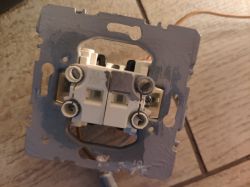 .
.
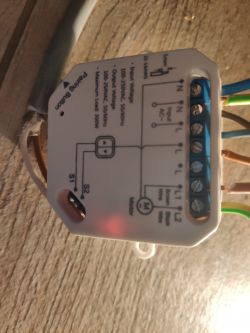 .
.
 .
.
 .
.




